Campbell's Wetlands outing 10 April 2021
The group set off and at the start of the boardwalk, we split into two groups so as not to put too much pressure on the fragile boardwalk with so many of us going on it at once. So Nella took about half the group to the northern end whilst I took the remainder to the hide. Despite there being few ducks in the main open area as seen from the hide, with time and patience we ended up with a good selection of duck species as they eventually emerged from the cumbungi clumps and out into the open water. Blue-billed Ducks were definitely the highlight for us as up to 4 males were seen along with a couple of females. Musk Ducks were also great to see and there were 2 juvenile birds seen along with a resplendent male close to the hide showing his leathery lobe (dewlap!) quite clearly for all to see. |
Glossy Black Cockatoo Count - March 2021
I think that this year we were counting breeding pairs and perhaps a young one hanging around from last year (maybe to learn the ropes). This thinking makes it more significant than ever. One pair from the Narrandera Hills is already nesting which makes it an early starter. Most birds have already paired up and are getting ready to nest by finding a hollow that she approves of. Some of the birds in Rankins Springs are just getting going. When she finds a suitable nest, she finally lays her one maybe two eggs. She stays in her hollow and he comes past and feeds her every evening. She’s hanging out for a feed by the time he comes and starts calling. This could also be so that he doesn’t get lost. |
Jacks Creek Outing 27 March 2021
It was also a last minute change to the proposed trip to Oolambeyan National Park but the rain during the week made the Oolambeyan trip impossible because of the road into the park. However, the group happily started the trek up the escarpment in a clockwise direction which we thought would be easier in the damp conditions. The walk/climb was more of an exercise experience and a chance for the participants to chat and discuss what they were seeing as there wasn't much by way of wildflowers to photograph. Once up on the hill, good views were had of the surrounding countryside and there were many opportunities for the members to get some interesting photos. There was plenty of talk about various cameras and what each felt about their equipment and preferences. |
News of our Wagga Wagga Chapter
Alan spoke passionately. Sharing his experiences of being a MFN member and participating in field trips and bird/plant sightings and recordings. He informed the meeting that the MFN group is now 25 years old and it facilitates and promotes the knowledge of natural history, encouraging the preservation and protection of the Australian natural environment, especially that of the Murrumbidgee River Valley. MFN also forms a network of other field naturalists across the country who observe, collect and document field data on birds, habitat and wildlife on a continuing basis. Data collected accords with scientific protocols and is recognised and cited as source research by governments of Australia and universities around the globe. |
FROGS AROUND NARRANDERA SUMMER 2021
We’ve been using the Australian Museum’s Frog ID app on an ad-hoc basis for a couple of years now to record frog calls. We then submit them and get them verified. This is a great and simple Citizen Science project anyone can get involved with. We’re fairly familiar with the calls of about six of the common frogs of the area and where we can find them, but the more we looked this year, the more we learned. Our visits to Narrandera Wetlands were positively quiet on the frog front this summer. This is excellent habitat and is usually rewarding but for some reason the frogs weren’t particularly vocal this year. The frogs we heard were less than the usual ones we expected and not in any great numbers. And our visits to Rocky Waterholes didn’t seem to have any frogs calling at all! On our drives through the old quarry site on Bundidgerry Hill we were surprised by the number of frogs calling from the puddles which had filled from the summer rain. Among the various species we recorded many Uperoleia rugosa Wrinkled Toadlets. We hadn’t recorded this one before so it was unique to us. It’s not endangered, or particularly special, just having a good year I guess. Our most surprising site was a small bog on another part of Bundidgerry Hill. Nella was furious at the local hoons who have been driving through this bog and we’ve had a few discussions about whether they’re destroying habitat or creating it. It really is debateable! |
Bittern Friendly Rice Farm Visit 23 January 2021
Fourteen members took advantage of the invitation and on the Saturday morning (23 January) we all met outside the Andreazza Farm at Wilbriggie and moved in convoy after car pooling behind Matt and Anna around the rice fields to see if we could find any bitterns. We were very fortunate as not long after starting, a bittern flew out of the first rice bay and most of us had a good view of the bird flying off. One other bird was seen flying and several were seen with their head sticking out above the crop during the drive around. Everyone managed to get some good views of the birds and several got some good photos. Back at the farm house, we stopped for morning tea which Anna generously provided and Matt showed a video of the use of the infra-red camera had which is attached to a drone. Despite the warm morning Matt was able to fly the drone over the rice crop and showed us how the infra-red camera can detect warm-blooded creatures in the area. The best time to use the camera is at dawn and dusk when the temperature difference is greater and the warm-blooded birds can be easily located. Matt was excited as on the previous day, he located a nest in one of the bays that had a young chick in the nest – the first he'd found this season. |
Lake Wyangan Wetlands Outing - 28 November 2020
First sighting on arrival was a flock of well over 100 Glossy Ibis flying out of the swamp and heading out to feed in the rice fields. Then a pair of Swamp Harriers circled over the wetlands – the male bird being very active diving into the reeds where I suspect there is a nest. We decided to head first to the northern end of the swamp in the hope of seeing or hearing bitterns. Some, Virginia and Nella actually, glimpsed a Little Bittern flying out of the cumbungi but it was all too brief for any of the rest of us to get onto it before it disappeared back into the reeds. There was no sign of any Australasian Bitterns that had been in the same part of the swamp for the past 2 months – they may have already headed for the rice fields to set up their breeding sites. Birds were few and far between on the water but there were a pair of White-fronted Chats feeding on the shore line along with a Black-fronted Dotterel. Out in the water there were several Magpie Geese and on the far bank, a family of them were escorting a bunch of goslings. That would be the third clutch I have seen there this Spring. |
Parrots of the Riverina
There is one exception and that is the Superb Parrot which has been around the Leeton area all year albeit in much reduced numbers compared with the present Spring and Summer. Once it was almost impossible to find any even along the river in late Autumn and Winter but now a small number can be seen regularly in the Leeton Golf Course all year. When I first came to live in Leeton and took part in the annual Twitchathon, Superb Parrots were always a bogey bird as by the time of the competition in late October, it was still difficult to locate any. Now, they can be seen flying over town in small flocks of up to 10 birds at most times of day since early September. |
A DONKEY SERENADE
I think the outing to Bundidgerry Hill, above and adjacent to Narrandera’s Rocky Waterholes on Sunday August 30, was such an event. I call it the “Donkey Orchid” trip. Safe to say, it was a floral experience that I have never had before; nor am I likely to have again. For my whole life I have had an abiding love of wildflowers, especially orchids. On bushwalks as a child my father always carried a magnifying lens (purloined from an old camera) with which we would peer into the radiant sanctuary of small wildflowers: especially orchids! - an eternal delight and indelible memory. In years past I have seen – but most infrequently – Donkey Orchids, but always in small numbers. So to exit the car and stand among literally hundreds of these glorious little flowers in full bloom, flourishing right across that arid hillside, was a revelation. |
National Tree Day
There were Canoe trees, trees with Mistletoe that provide food for Honeyeaters (e.g. Painted Honeyeaters) and many other birds, rough bark trees that provide great habitat for lizards, trees that provide wonderful nesting sites, trees with unusual pods that provide food for the Glossy Black Cockatoos, dead trees that provide hollows as nesting sites for Superb and Turquoise parrots, bee trees for native bees that help in the pollination of agricultural and native plants, trees planted to honour our Veterans and trees we played in as kids. Sadly I found photos I found photos of beautiful trees that have been removed along roadsides and in the middle of paddocks. Given it takes 15-20 years to grow a substantial shelterbelt it seems unreasonable that trees should be removed with little thought as to who might be using them as: a home, food source, nesting site, shade, windbreaks or as protection to cool farms dams. Given it takes 100 years to produce a hollow in a tree, to see some of these old growth trees removed from our landscape is heart breaking. Some community members and landholders spend months growing seedlings to plant in wetlands and on farms while other members of the community spend time removing old trees for seemingly little or no reason. |


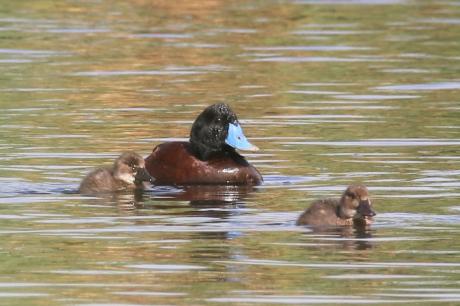
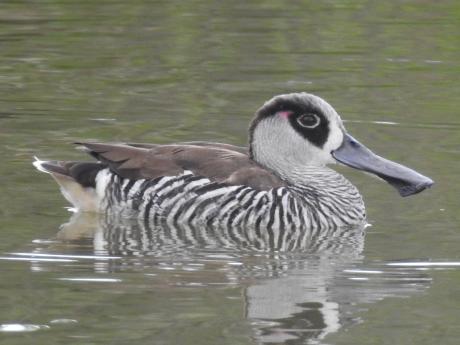 14 people made up the group for the outing. We met in the car park at Campbell's at 9am and David Kellett gave a brief talk to the group about some recent funding he had applied for and got for improvements to the track leading from the car park to the board walk and beyond along the northern section of the wetlands.
14 people made up the group for the outing. We met in the car park at Campbell's at 9am and David Kellett gave a brief talk to the group about some recent funding he had applied for and got for improvements to the track leading from the car park to the board walk and beyond along the northern section of the wetlands.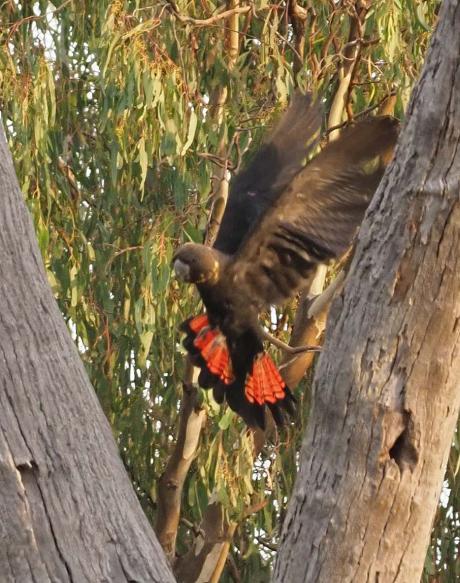 The Count was conducted a few weeks later than usual. We all probably wished that we hadn’t done it at all when the wind blew up and bent the trees in half.
The Count was conducted a few weeks later than usual. We all probably wished that we hadn’t done it at all when the wind blew up and bent the trees in half.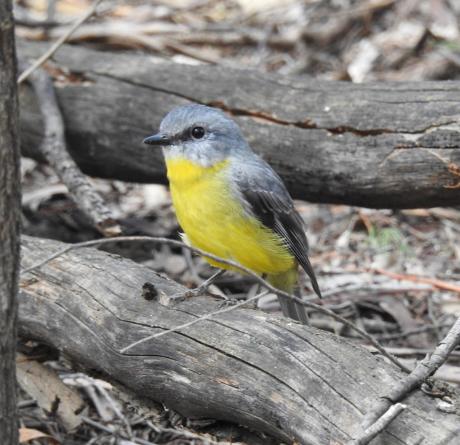 This was a combined outing with the local Camera Club and was very well attended by both groups.
This was a combined outing with the local Camera Club and was very well attended by both groups.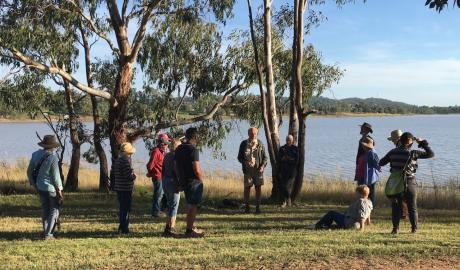 The Wagga Wagga Chapter of Murrumbidgee Field Naturalists began officially on 7 December 2020 when Alan Whitehead President of MFN’s was guest speaker at a meeting with local nature and bird enthusiasts held in Wagga Wagga.
The Wagga Wagga Chapter of Murrumbidgee Field Naturalists began officially on 7 December 2020 when Alan Whitehead President of MFN’s was guest speaker at a meeting with local nature and bird enthusiasts held in Wagga Wagga.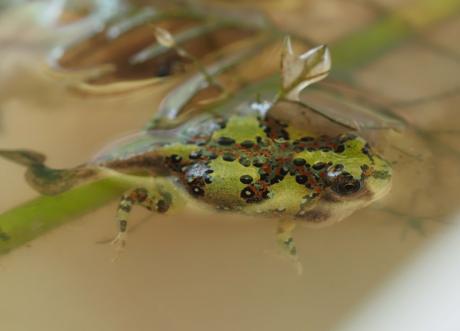 Nella and myself have been taking advantage of the wetter than usual summer to see what frogs are around Narrandera this year. A few locals have joined us on our forays and have enjoyed learning about frogs and the Frog ID app.
Nella and myself have been taking advantage of the wetter than usual summer to see what frogs are around Narrandera this year. A few locals have joined us on our forays and have enjoyed learning about frogs and the Frog ID app.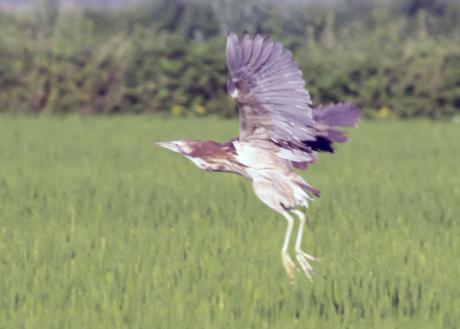
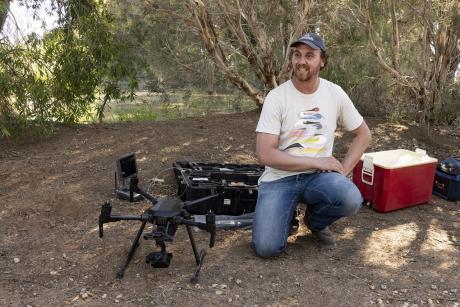 Anna Wilson (Local Land Services) and Matt Herring invited members of the MFN to visit a rice farm and to see firsthand the latest methods used by Matt in locating bittern nests in the rice crops.
Anna Wilson (Local Land Services) and Matt Herring invited members of the MFN to visit a rice farm and to see firsthand the latest methods used by Matt in locating bittern nests in the rice crops.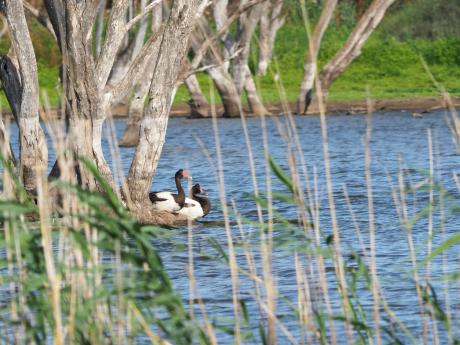
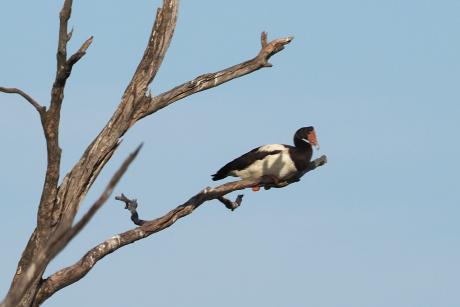 Ten of us met at 7.30am at the Campbell's car park. Defying all predictions about 42 degrees that day, we nonetheless looked forward to getting in at least 4 hours before the heat got too much.
Ten of us met at 7.30am at the Campbell's car park. Defying all predictions about 42 degrees that day, we nonetheless looked forward to getting in at least 4 hours before the heat got too much. Few places, if any, in other parts of the country can boast of so many without travelling a long distance to see more. What is of concern though is the difficulty these past few years in tracking down what once was easy-to-see species like Turquoise and Mulga Parrots. The Mulgas are still about but not in the numbers they were a few years ago prior to the last drought. With Wattle Dam dry for the latter part of 2019 and the early part of 2020, these once common species seem to have moved elsewhere. Even with the local dams now full, the birds are still not being seen in the numbers they once were.
Few places, if any, in other parts of the country can boast of so many without travelling a long distance to see more. What is of concern though is the difficulty these past few years in tracking down what once was easy-to-see species like Turquoise and Mulga Parrots. The Mulgas are still about but not in the numbers they were a few years ago prior to the last drought. With Wattle Dam dry for the latter part of 2019 and the early part of 2020, these once common species seem to have moved elsewhere. Even with the local dams now full, the birds are still not being seen in the numbers they once were.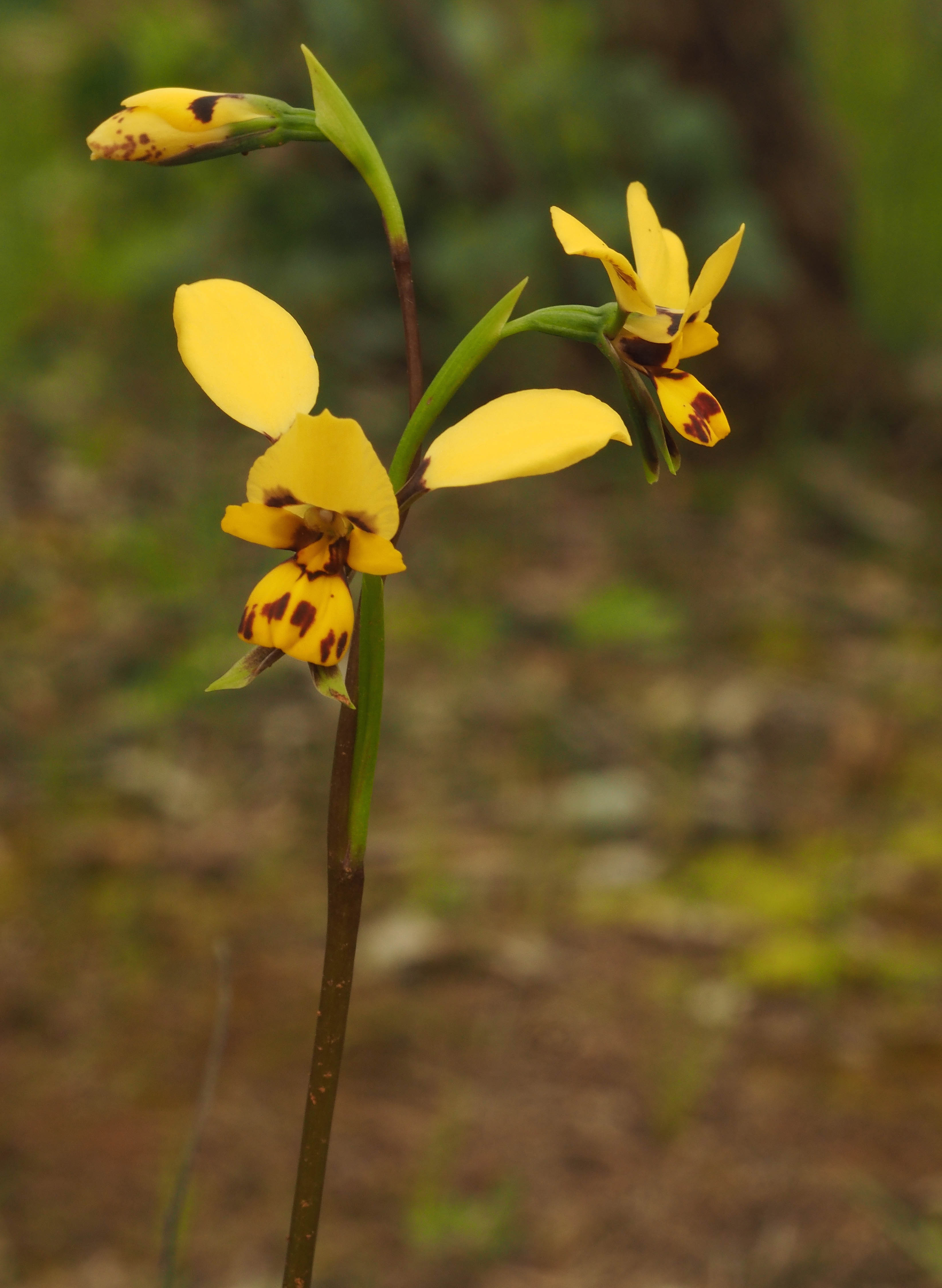
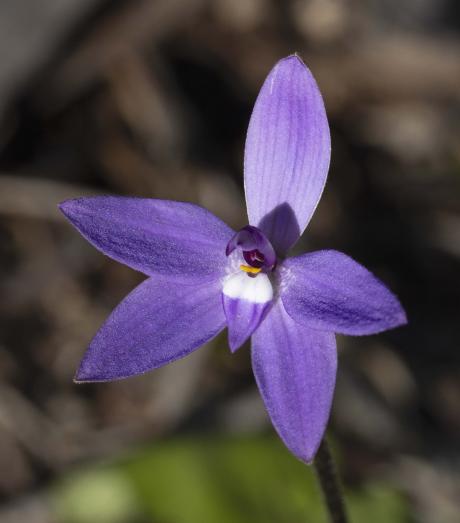 Some field naturalist outings can be defined by a signature event. This is one in which fellow attendees nod knowingly when a certain phrase, in context, is uttered – even years later!
Some field naturalist outings can be defined by a signature event. This is one in which fellow attendees nod knowingly when a certain phrase, in context, is uttered – even years later!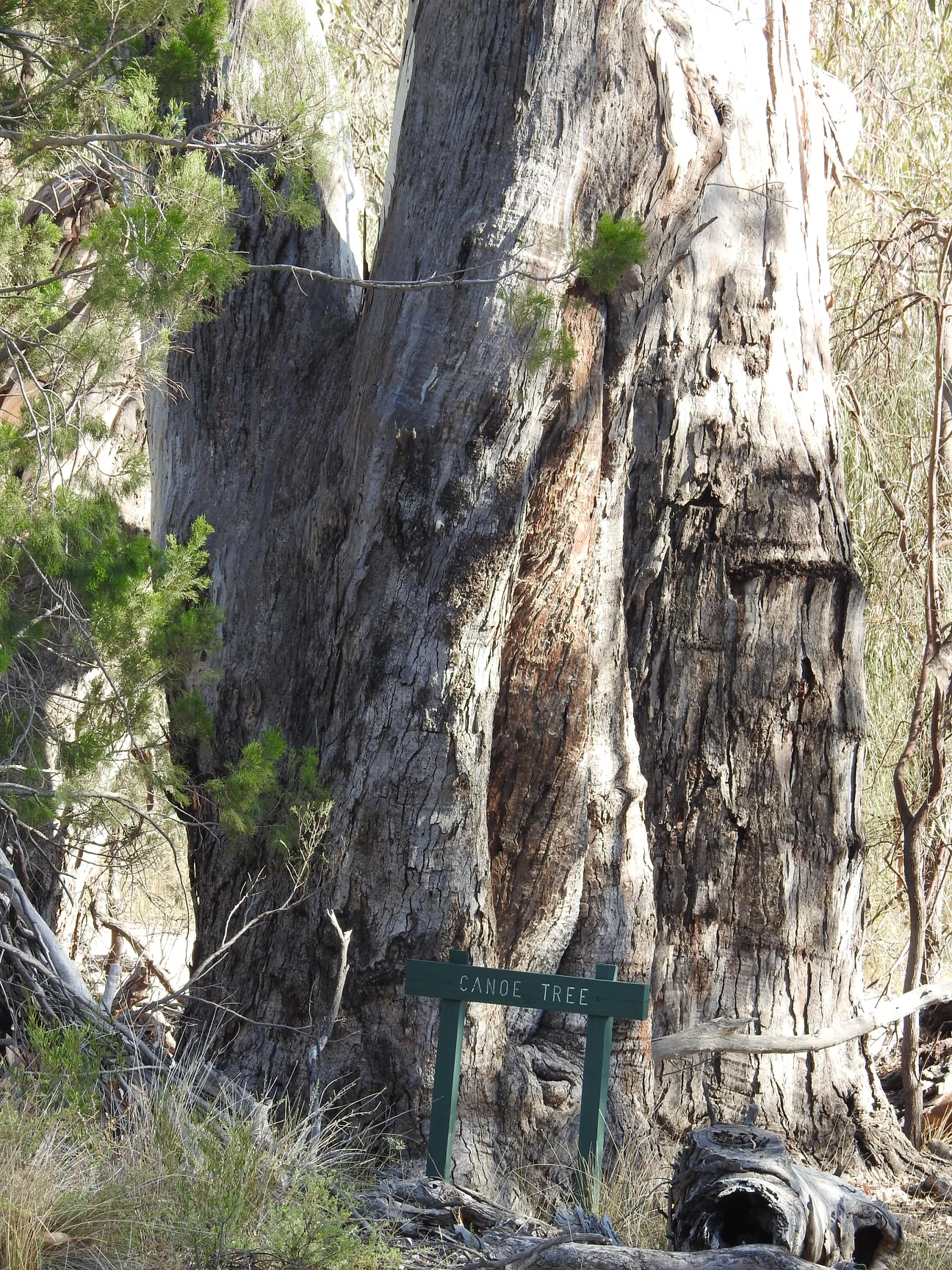 When I looked through all the photos I have collected over the last few years I came across so many photos of beautiful trees that had so many different purposes in our local landscape.
When I looked through all the photos I have collected over the last few years I came across so many photos of beautiful trees that had so many different purposes in our local landscape.